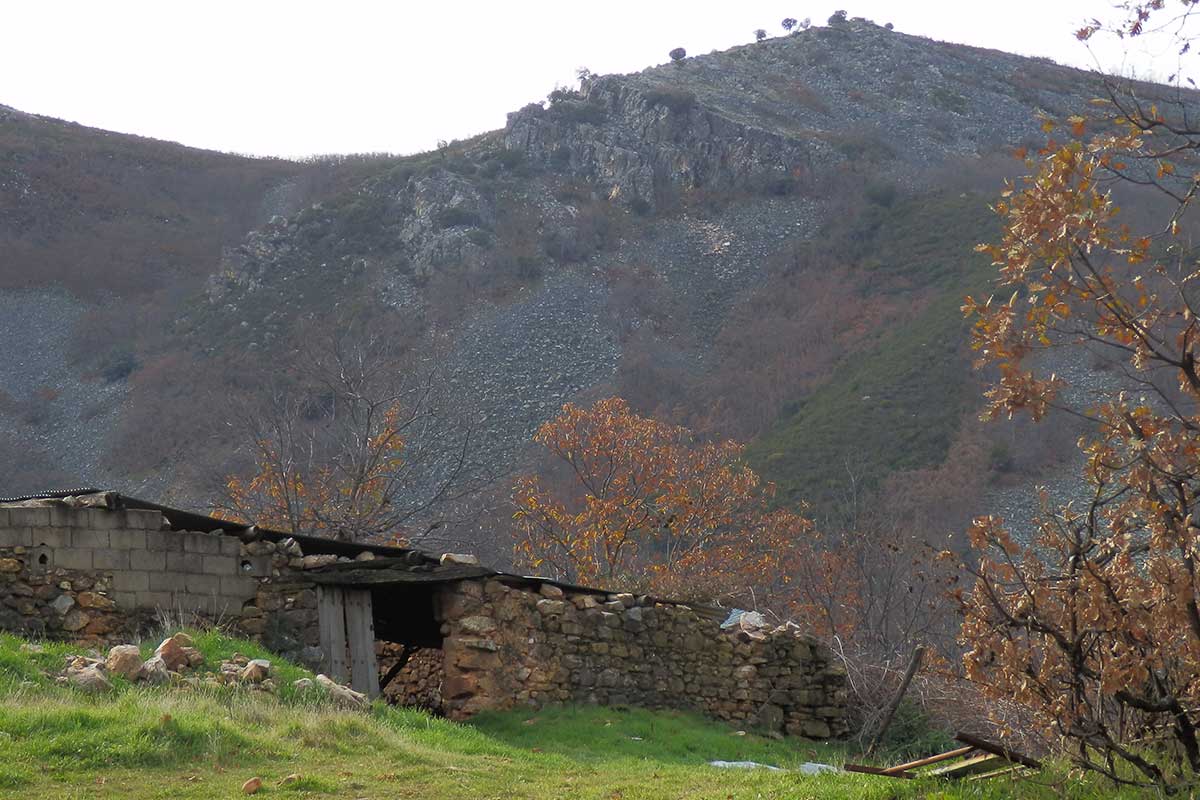The Camorro de Castañar is a residual relief form that has been sculpted by erosion to the hard Armorican quartzites. In other words, it is a “witness hill” that consists of a quartzite vestige of the hinge (cupola) of the Ibor-Guadalupe anticline. As can be seen in the description of this macrostructure (Geosite no. 23), this anticline was completely worn down by erosion to leave only the deepest materials visible, which are shales, sandstones, and dolomitic limestones of the Ediacaran period (635-540 m.y.), while the Armorican quartzites of the Ordovician are today found on the flanks of the anticline, together with the adjacent Viejas-Torneros and Guadarranque synclines.
However, uneroded remains of these quartzites have also survived near the axis of the anticline, hence the concept of “witness hill”, an elevation of some 1,100 metros generically known as Camorro. The area includes two Camorros, this one of Castañar de Ibor and another further to the south in Navalvillar de Ibor that was described in Geosite no. 30. Erosion of both the Camorros has worn down the strata of shales, sandstones, and quartzites corresponding to the upper Ordovician-Silurian series that still survive on the Guadarranque syncline, from which it can be surmised that this syncline was originally much higher.
The Camorro de Castañar is also an exceptional paleontological deposit that allows the observation of numerous examples of Skolithos, Cruziana, and Daedalus, trace fossils that are very abundant in the district of Las Villuercas. The Armorican quartzites and siliceous sandstones dating from the Lower Ordovician that are so abundant in the Geopark show numerous signs of the presence and feeding of extinct animal species, some of difficult phylogenic attribution such as those that have given rise to the Daedalus. Their shape in clusters and relative large size make them easy to observe. It is currently believed that this trace fossil represents colonies of annelid worms that lived on sandy sea floors and beaches almost 500 million years ago, sharing their habitat with many other marine species that have not fossilised together with Daedalus sp. given the fact that this is unlikely in sandy sediments.

